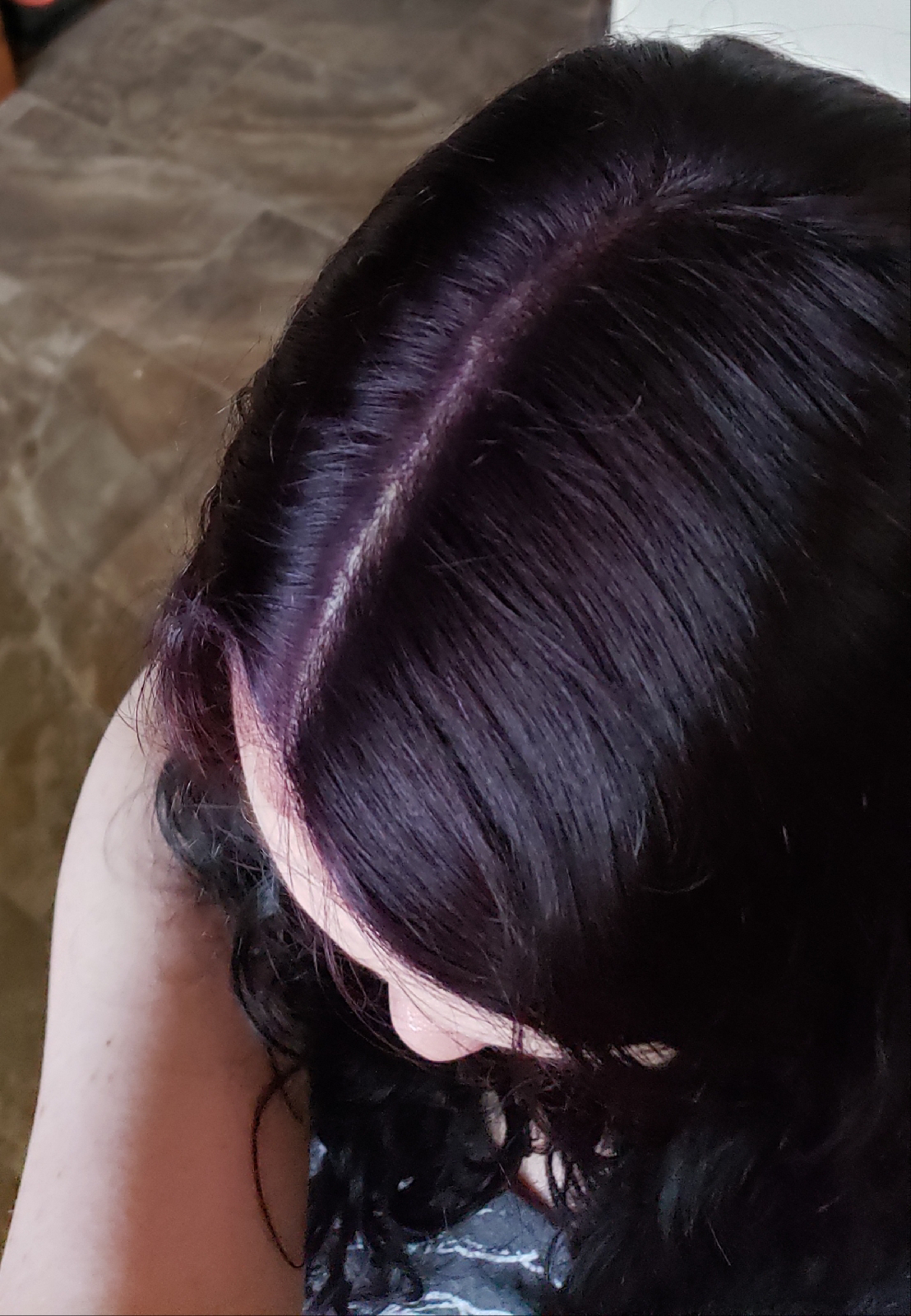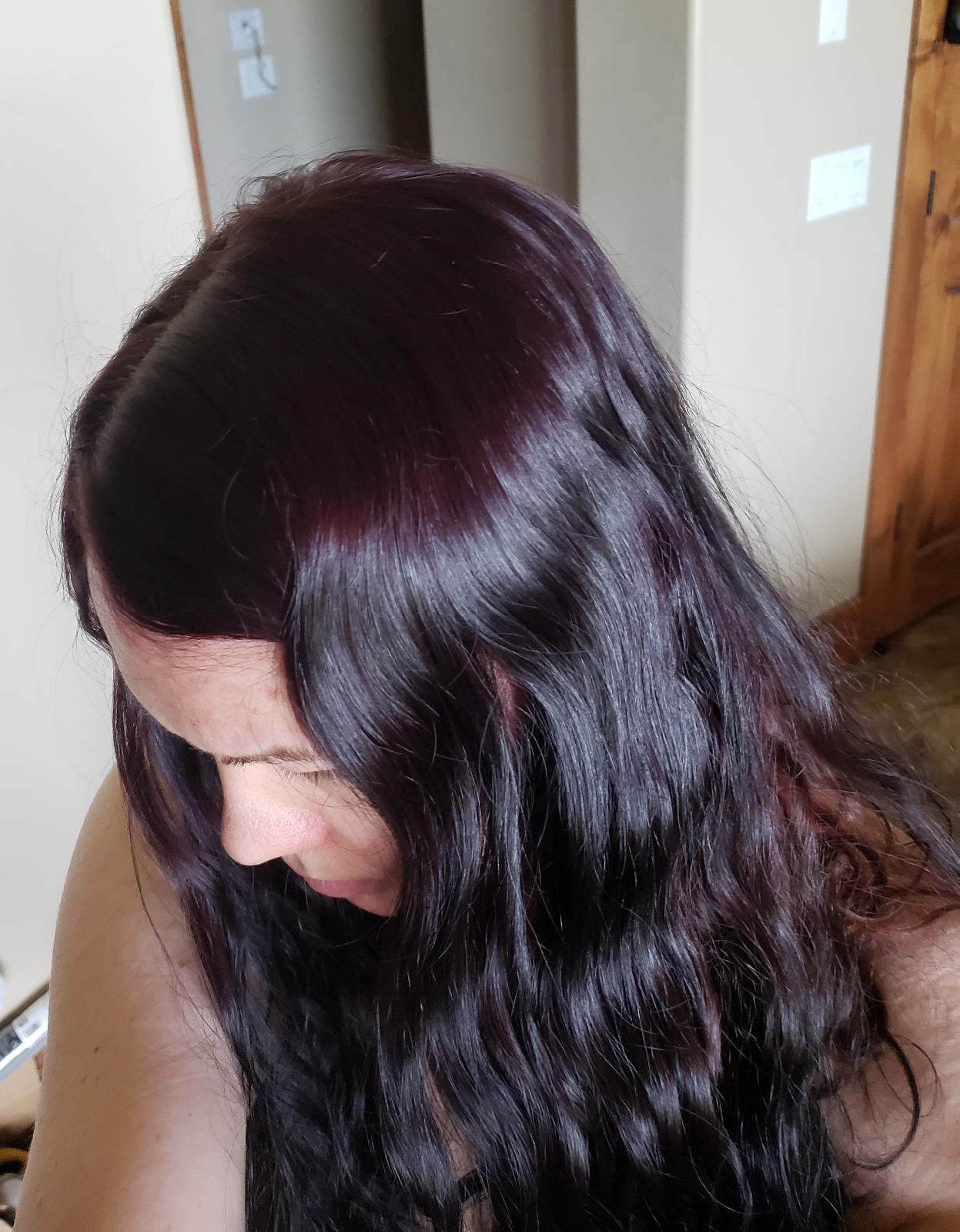First time experimenting with alum in logwood
After 3 weeks of nonstop experimenting on both my spouse's shaven off hair samples and my own attached hair, I finally achieved a purple shade I love! (Photos below)
This is with logwood (campeche) bark, a solution of alum powder and baking soda, guar gum for thickening, and distilled water. Alum (potassium aluminum sulfate) is a mordant that fixes the dye to fiber, in this case hair. You can web search its use in fabric dyeing. Alum (and its variations) is pretty much the only safe metal mordant when used topically. Without a mordant, it's hard to get natural dyes to stick that aren't henna or indigo.
Alum is safe to use on skin because the aluminum cannot be absorbed. The size of the molecules is too large to pass through skin. But don't inhale the powder or ingest it, because then it can cause issues.
Baking soda is fine other than it can strip natural oils from hair with repeated use. But this does not happen when using it only once per month, so not to worry when using it with your dye. Besides, the ph will be lowered (it's the alkalinity that strips oils), and it also won't be sodium bicarbonate any more when you're done mixing the ingredients.
I have naturally dark blond hair, and there was a light layer of henna (light orange) with half an inch grown out at the roots before applying the logwood dye. In my photos, ignore the black hair at the bottom, which I'm growing out (was indigo).
After having tried using logwood bark with just baking soda and experiencing more fading than I'd like (maybe due to low porosity hair) as well as a more wine red purple color rather than a true purple, I decided to figure out how to use alum for greater permanence. A few French hair-related sites describe using it with logwood to get purple tones. I couldn't get it to work at first (banging my head against the wall) until I balanced the ph of the alum solution with baking soda first, before adding it to my logwood infusion/decoction. I used half the volume of baking soda as that of alum.
I couldn't mix it with henna or other plant powders without ruining the color (the mix turned brown every time), so it seems alum and henna don't mix.
The first two photos were taken before the first wash (one in direct sunlight), and the third was after the first wash. You can see that it became more of a plum purple than a true purple, after the residue was washed away. I still like it. Thankfully, washing my face frequently hasn't removed any color whatsoever from around my hairline, so it seems to be permanent! The fourth photo shows what happened after repeatedly washing with a salty shampoo. Oops.
After rinsing out the dye with water and using conditioner (still has residue)
Same as above, but in direct sunlight
After the first wash
I eventually caused the color to oxidize/fade by washing my hair with shampoo containing salt. Oops, no more salt in the future! I now know how to prevent this and keep the pinkish purple color permanently.
Note that I have since decided to reserve alum as only an after-soak. Also, I learned that this color only stuck because I had previously dyed my hair with henna. So it seems both henna and alum are needed to make the pink-purple color permanent. See later posts.






Comments
Post a Comment